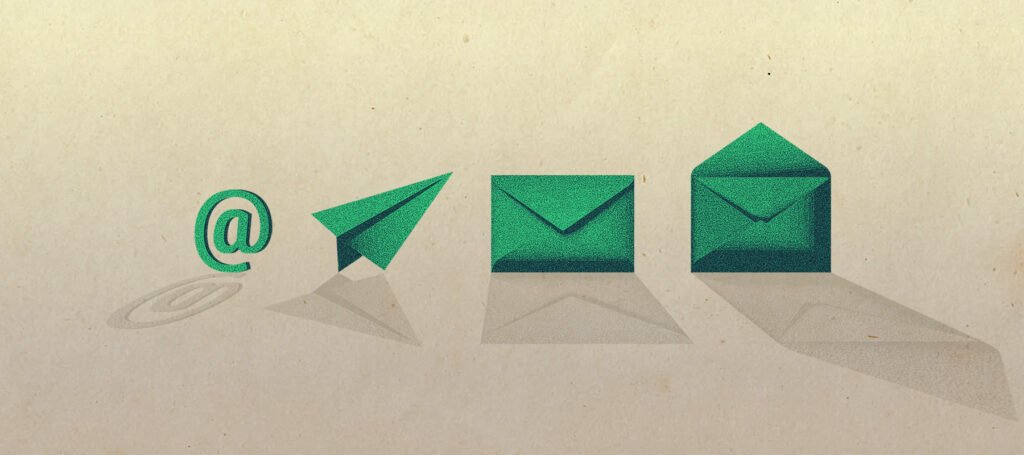Relied upon by many, the email channel is a staple in the personal and professional lives of senders and recipients around the world. In October, email will celebrate its 50th birthday… and it’s been quite the journey.
Age of adoption
In October 1971, email was born when Ray Tomlinson sent the first ever email. Ray’s expertise was centred in engineering, and with the insufficiency of telephones at the time, he felt there was no reliable way for people to leave messages for each other. However, he believed that computers – and email – could fill this void.
Initially, email was used as a channel for a small circle of university researchers, government employees, and members of the military within the U.S. Department of Defense. The email use case was exactly as Ray had previously uncovered – it was a method for direct yet efficient communication. Soon after, the appeal of email as a channel, with uses beyond professional communication, began to appear.
In 1978, the first mass email marketing campaign was sent. Gary Thuerk sent a campaign to 393 addresses to announce the launch of new computers. This resulted in a slap on the wrist from a high-ranking Pentagon official, but also generated $13 million in sales for Thuerk’s company. The risk paid off and a precedent was set.
Adoption spread further in the 80s amongst intellectuals and academics, and as computers and the internet became commercialised, this set email on a path toward widespread global adoption.
Age of acceleration
Email was now being adopted all over the world – a trend that would only accelerate in the 90s. This increase in popularity was due largely in part to the development of two major areas: the World Wide Web and Hotmail.
Hotmail was born in 1996 as a free service, and this is how it remains today. Hotmail offered people the opportunity to access email at a pace that was not possible prior. Often a common barrier to the adoption of new technologies, ease of use was not an issue for Hotmail. The service was easy to access and easy to use, putting Hotmail – and email – on a path toward accelerated adoption.
If you’ve ever heard the phrase “sticking your head above the parapet”, you may know what’s coming next! Email had entered the world’s stage and brought a lot of positive attention unto itself, but with that positive attention also came negative attention. A combination of inexperienced users, lack of tools to filter emails, and legal loopholes bore the spam phenomenon. Spam became a global concern within governments and companies during the late 90s. There was a new demand for services that would help reduce spam in the ecosystem. This caused the emergence of companies such as Return Path and forced mailbox providers to up their game.
Age of access
Microsoft had paved the way with the Hotmail webmail service. Following the growth of the channel’s adoption and popularity, others began to pay attention. This led to the launch of Gmail by Google in 2004.
Gmail addressed many early adopters’ concerns, offering powerful spam filters and extensive storage. It was yet another option for the world’s consumers to access their email. According to the DMA’s Consumer Email Tracker 2021, sponsored by Validity, Gmail has grown to be the most popular mailbox provider today, leading with 38% of consumer mailbox shares in the UK. This number increases even further in regions such as North America (53%).
Having a mailbox is all well and good, but in the 2000s, accessibility of email was about to take another leap by going mobile. Blackberry set the pace by introducing email to mobile phones, but it was limited to professional use. The second gamechanger of the age of access was about to show its hand.
Apple and the introduction of the iPhone has forever changed how we interact with our phones, and email fits right into that equation. Access to multiple channels and email was now available at our fingertips. A hyperconnected world awaited us all.
As we see to this very day, the age of access will never be static. Smart watches, speakers, and fridges (yes, fridges!) aim to disrupt the way we traditionally interact with the inbox. In fact, the DMA found that 12% of millennials consume personal email via a smart watch or smart speaker. Adaptation is a cornerstone of the modern email ecosystem.
Age of adaptation
In the previous decade alone, both senders and recipients alike have been forced to adapt to new ways of interacting with email as a marketing channel.
We’ve seen both technology and legislation impact the way senders operate, with the introduction of Domain-based Message Authentication, Reporting and Conformance (DMARC) and General Data Protection Regulation (GDPR), respectively. This was all with the intention of protecting the email user from modern day threats and tendencies. An email ecosystem that is consistently adapting and evolving is critical for long-term stability and reliability.
Today’s roaring 20s have gotten off to a slow and unexpected start, but this has provided a landscape for email’s best qualities to shine and for consumers to further drive marketers to improve the quality of their work. Consumers have shifted away from typical offers/promotional content and have demanded relevance and empathy, instead. This year, 2021, was the first time UK consumers identified relevance as the leading reason to like emails from a given brand, rather than emails containing offers.
The email ecosystem has evolved throughout its 50 years and will only continue to do so. Email has often been touted as an outdated channel, but ongoing demand from consumers and adaptation from both senders and the wider ecosystem proves otherwise. As evidenced by the rising budgets being committed to this most popular of marketing channels, the age of email is far from over.
